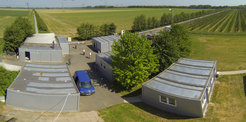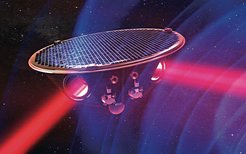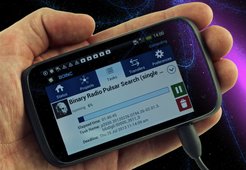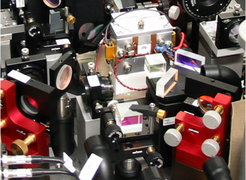Thinking beyond Einstein
Understandable research on Wednesday
Under the motto “Thinking beyond Einstein”, a public series of talks in November 2013 at the Albert Einsten Institute (AEI) in Hannover will focus on a few of the exciting research fields in which AEI scientists work. On four Wednesday evenings in November, the researchers are inviting all those interested to attend a series of generally understandable talks at the AEI from 6 p.m. each evening. In addition to a virtual visit to the gravitational wave detector GEO600 near Hannover, the focus will be on the space observatory eLISA and the leading role being played by the institute in its development. The talk will also explain, how you, together with many other volunteers from around the world, can make astronomical discoveries on your PC, as well as how the paradoxical quantum world will make future communication more secure.
Where?
Max Planck Institute for Gravitational Physics
(Albert Einstein Institute)
Callinstraße 38
30167 Hannover
Room 103 (signposted at venue)
When?
Wednesday, 6, 13, 20 and 27 November. Each evening starts at 6 p.m., free admission
Win an exclusive guided tour through the AEI labs!
Pay close attention during the talks in order to answer correctly as many questions as possible on the participant questionnaire. This way you’ll have the best chances to win one of the six places for an exclusive guided tour through the labs of the AEI and thereby experience cutting-edge research live and at firsthand. The guided tour will take place on 27 November at the end of the last talk.
Wednesday, 6 Nov. at 6 p.m.
Einstein’s spacetime waves – virtual visit to the GEO600 detector

Talk by Harald Lück
The GEO600 detector in Ruthe near Hannover is a very special listening post for outer space: The search for gravitational waves is expected to enable brand new insights into the universe. In 1916 Albert Einstein predicted the existence of gravitational waves in his general theory of relativity. They bear witness to star explosions, the collision of black holes and even the big bang itself. The experimental detection and analysis of gravitational waves is today one of greatest challenges of present-day physics. This talk will not only explain how the first direct detection of gravitational waves will change our astronomical worldview, you will also be able to take a closer look at the detector itself via a virtual tour.
Wednesday, 13 Nov. at 6 p.m.
eLISA – a laser interferometer in space

Talk by Peter Aufmuth
The longer the arm length, the more sensitive the gravitational wave detector. On Earth, it is possible to build a detector with a 10 kilometre arm length at most. Moreover, seismic disturbances limit the sensitivity of terrestrial detectors at low frequencies: it will never be possible to measure gravitational waves whose frequencies are lower than 10 Hertz. However, it is in precisely this range where numerous interesting sources are, for example, extremely massive black holes – and which is why a space-based detector is being planned. In space there are no seismic disturbances, but rather an outstanding vacuum and the arm length can be of any magnitude. eLISA will consist of three satellites that are located several million kilometres apart from each other, and that exchange laser beams. This talk will present the project and the plans involved; a probe mission (LISA Pathfinder) is planned for launch in 2015.
Wednesday, 20 Nov. at 6 p.m.
Astrophysics on your PC – discovering radio pulsars with Einstein@Home

Talk by Benjamin Knispel
Neutron stars are extreme celestial bodies which are born in the spectacular explosions of massive stars. The can be observed in the electromagnetic spectrum of radio waves through to gamma rays and are very promising sources of gravitational waves. Over 300,000 volunteers from around the globe have already made computing time available on their own PCs for the distributed volunteer computing project Einstein@Home, which was developed to a large extent at the Albert Einstein Institute, and are thereby helping with the search for new neutron stars. How this has enabled the discovery of around 50 new radio pulsars, how you too can possibly discover a neutron star and what we can learn about the universe from all this, is the focus of this talk.
Wednesday, 27 Nov. at 6 p.m.
Quantum cryptography – from paradox to product

Talk by Vitus Händchen
The absolutely secure encryption of secret and classified information is at the heart of quantum cryptography. The inherent secureness is based on fundamental quantum physical laws and not, as with standard encryption methods, on the assumption that code breakers only have limited computing capacity at their disposal. Quantum cryptography is thus a real future alternative for the encrypted transmission of top-secret data. In this talk, the fundamental principles of quantum cryptography will be clearly explained and illustrated. In a first step, a number of quantum mechanical fundamentals will be explained with examples. The first encryption protocol, which is already today available on the market, will then also be introduced. What’s more, a glimpse will be provided into the “Crypto on Campus” project in which a quantum cryptography channel with squeezed light fields is being established at the Albert Einstein Institute in Hannover.














